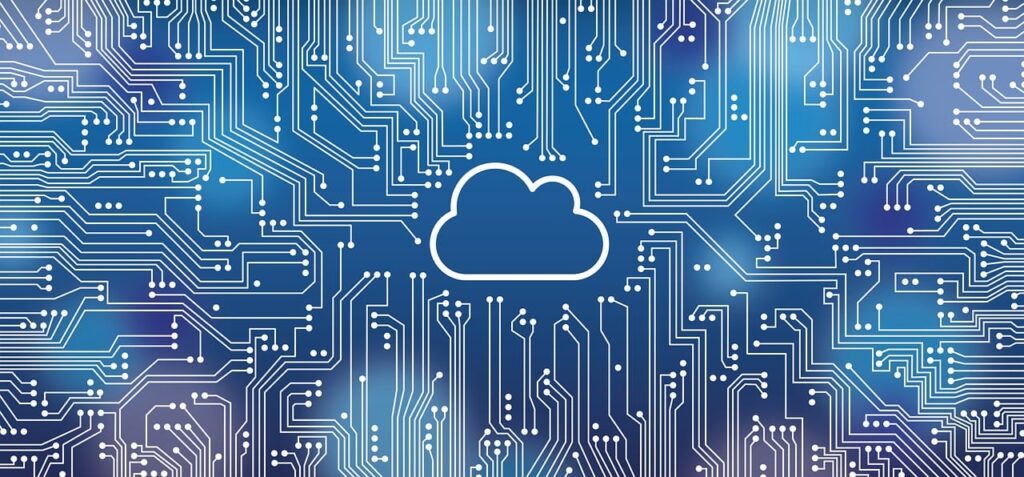
Edge Computing vs. Cloud Computing: What’s the Difference?
In today’s fast-paced digital landscape, businesses are handling vast amounts of data at unprecedented rates. As technologies like the Internet of Things (IoT), artificial intelligence (AI), and real-time analytics become essential, the debate between edge computing and cloud computing grows louder. While both serve the purpose of data storage and processing, they differ significantly in terms of architecture, speed, security, and practical applications.
So, what exactly is the difference between edge computing and cloud computing, and how do you decide which is best for your needs? Let’s dive in.
What is Cloud Computing?
Cloud computing refers to the delivery of computing services, such as servers, storage, databases, networking, software, and analytics, over the internet or “the cloud.” With cloud computing, businesses don’t need to own or maintain physical data centers. Instead, they rent computing resources from providers like Amazon Web Services (AWS), Microsoft Azure, or Google Cloud Platform (GCP).
Advantages of Cloud Computing:
- Scalability: Cloud services can scale up or down depending on the demand, making it ideal for businesses experiencing rapid growth or fluctuating workloads.
- Cost-Efficiency: Cloud computing operates on a pay-as-you-go model, helping businesses save on hardware and maintenance costs.
- Accessibility: Since cloud resources are available over the internet, users can access data and applications from virtually anywhere, promoting remote work and collaboration.
However, cloud computing has its limitations, especially when it comes to processing real-time data, as it often relies on centralized data centers, potentially leading to latency issues.
What is Edge Computing?
Edge computing brings data storage and computation closer to the devices or locations where it’s generated, rather than relying on a centralized cloud server. This technology is called “edge” because processing occurs at the network’s edge, reducing the need for data to travel long distances.
Advantages of Edge Computing:
- Reduced Latency: By processing data closer to the source, edge computing dramatically reduces lag times, making it suitable for real-time applications like autonomous vehicles and industrial IoT.
- Improved Reliability: Edge computing can continue functioning even if connectivity to the cloud is lost, ensuring smoother operations in areas with poor internet access.
- Enhanced Privacy and Security: Since data doesn’t need to be sent to distant cloud servers, there’s a lower risk of interception during transmission. This makes edge computing especially attractive for industries with stringent privacy regulations, such as healthcare and finance.
While edge computing offers lower latency and enhanced security, it does require local infrastructure, which could increase costs in certain scenarios.
Key Differences Between Edge and Cloud Computing
1. Location of Data Processing
- Cloud Computing: Centralized in remote data centers.
- Edge Computing: Decentralized, closer to the source of data generation (e.g., IoT devices, local servers).
2. Latency
- Cloud Computing: Higher latency, as data needs to travel longer distances.
- Edge Computing: Minimal latency, since data processing occurs locally, near the source.
3. Scalability
- Cloud Computing: Highly scalable due to vast cloud infrastructures.
- Edge Computing: Limited scalability, as it relies on local resources.
4. Data Security and Privacy
- Cloud Computing: Greater vulnerability during data transmission, though robust cloud encryption and security measures are in place.
- Edge Computing: Improved security by limiting data transmission and keeping sensitive data locally.
5. Cost
- Cloud Computing: More cost-effective for businesses that don’t need immediate processing, as they pay for only what they use.
- Edge Computing: Can be more expensive upfront due to the need for local hardware and infrastructure, but cost savings may be realized over time with lower bandwidth needs.
6. Use Cases
- Cloud Computing: Ideal for large-scale data storage, long-term analytics, machine learning, and remote collaboration. Popular in industries like e-commerce, software development, and media streaming.
- Edge Computing: Perfect for real-time applications, such as autonomous vehicles, industrial IoT, smart cities, and healthcare. It’s critical where speed, reliability, and security are non-negotiable.
Which One Should You Choose?
The choice between edge and cloud computing ultimately depends on the specific needs of your business or application.
- If you require real-time data processing, low latency, and heightened privacy, edge computing is the clear choice. This makes it the go-to option for industries like manufacturing, healthcare, and autonomous technologies, where split-second decisions are critical.
- If your focus is on scalability, long-term data storage, and accessibility across multiple locations, cloud computing is the better solution. It’s an excellent choice for businesses handling large-scale data analysis or offering services globally without needing immediate response times.
Many modern businesses are adopting hybrid models, combining both cloud and edge computing to maximize the benefits of each. For example, a retail company might use edge computing in their stores for quick, real-time data analysis while using the cloud for centralized management and long-term data storage.
Conclusion
Edge computing and cloud computing are both vital technologies in today’s data-driven world, each offering unique advantages. As businesses continue to innovate, the need for both real-time processing and large-scale data storage will only grow, making the combination of edge and cloud solutions increasingly popular.
Whether you lean toward edge computing for its speed and security or prefer the scalability of cloud computing, understanding their differences will help you choose the best strategy to meet your business’s demands.
